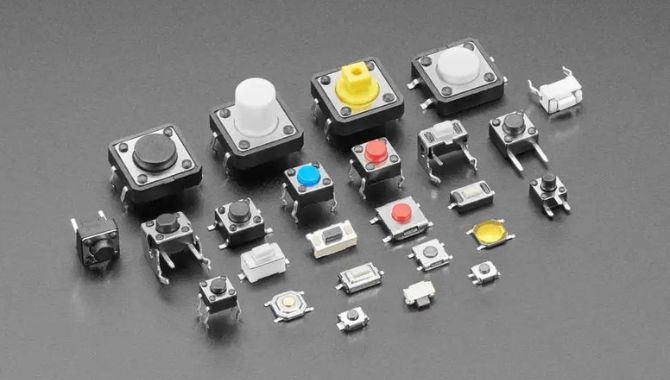
A tactile switch is a type of electromechanical switch used in a wide range of applications, from consumer electronics to industrial equipment. These switches are favored for their tactile feedback, which provides a physical response to the user, confirming that the switch has been activated. Understanding the key attributes that make a good tactile switch can help in selecting the right switch for a specific application. Here are the crucial factors to consider:
1. Tactile Feedback
- Definition: The most distinguishing feature of a tactile switch is the tactile feedback or the physical sensation felt when the switch actuates (makes contact).
- Importance: Good tactile feedback helps prevent accidental presses and ensures the user is aware that the input has been registered, enhancing the user experience.
2. Operating Force
- Definition: The operating force is the amount of force required to actuate the switch.
- Considerations: A balance is needed. Too light, and the switch may activate accidentally; too heavy, and it may be uncomfortable for continuous use. The optimal operating force depends on the application, with typical values ranging from 50 to 300 grams.
3. Travel Distance
- Definition: Travel distance is the distance the actuator must move to close or open the switch’s contacts.
- Impact: This attribute affects both the tactile feedback and the speed at which a user can repeatedly press the switch. Shorter travel distances can allow for quicker inputs but may reduce the tactile sensation.
4. Durability and Lifespan
- Measure: Durability is often measured in cycles, with a cycle being one complete actuation.
- Requirement: A good tactile switch should have a high number of cycles, often rated in the millions, to ensure it can withstand frequent use over a long period without degradation in performance.
5. Size and Form Factor
- Variety: Tactile switches come in various sizes and shapes, including standard, ultra-thin, and side-press models.
- Application: The choice depends on the space available on the PCB (Printed Circuit Board) and the device’s ergonomic requirements. Smaller switches are beneficial for compact devices but may offer different tactile feedback and operating forces.
6. Sound
- Aspect: The sound produced upon actuation can be a desirable attribute for some applications, providing audible feedback.
- Preference: While some users prefer a clicky sound for confirmation, others may require silent switches for noise-sensitive environments.
7. Electrical Specifications
- Parameters: Important electrical attributes include the switch’s current and voltage rating, contact resistance, and insulation resistance.
- Compatibility: These specifications must match the requirements of the application to ensure reliable operation and prevent damage to the switch or the circuit.
8. Environmental Resistance
- Factors: Resistance to dust, water (often rated by the IP code), temperature, and chemicals ensures the switch’s reliability in various operating conditions.
- Selection: Depending on the application, selecting a switch with appropriate environmental sealing can be critical, especially for outdoor or industrial applications.
9. Material Quality
- Construction: High-quality materials for the contacts (e.g., gold plating) and the housing can significantly impact the switch’s performance and longevity.
- Consideration: The choice of materials affects resistance to wear, environmental conditions, and electrical conductivity.
When selecting a tactile switch, consider the application’s specific needs, including the required feedback, operating environment, and electrical specifications. A well-chosen tactile switch can enhance the user experience by providing reliable and consistent performance throughout its lifespan.


